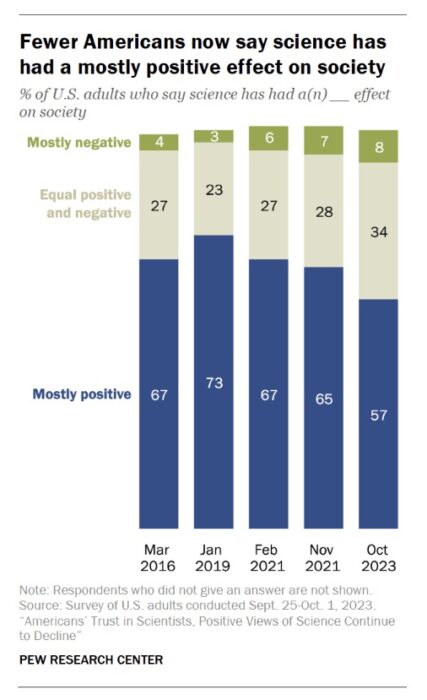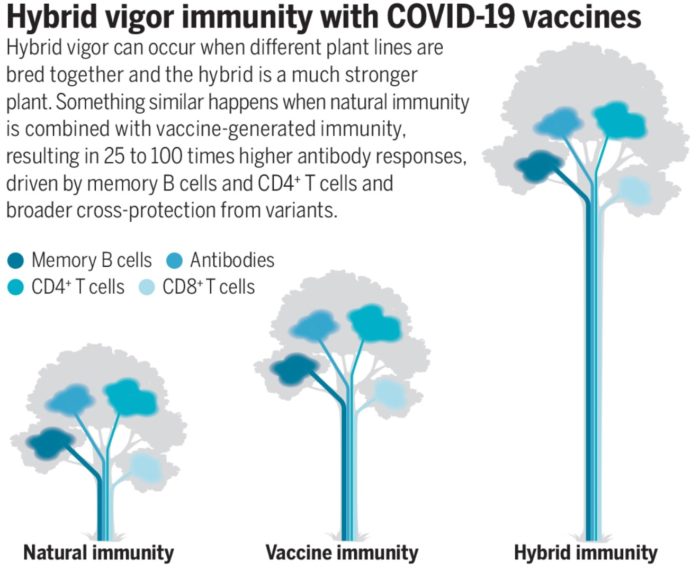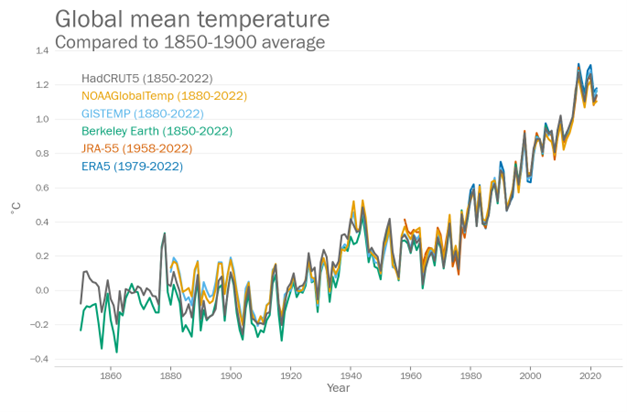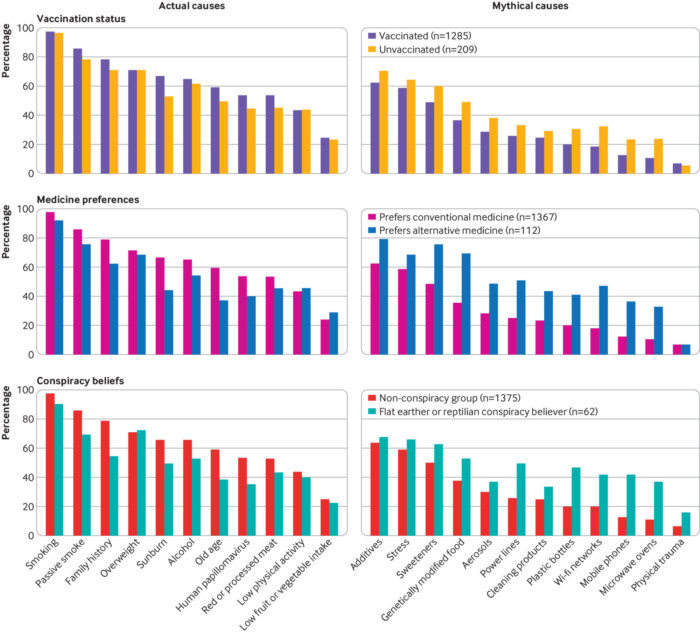Jul
09
2024
 In an optimally rational person, what should govern their perception of risk? Of course, people are generally not “optimally rational”. It’s therefore an interesting thought experiment – what would be optimal, and how does that differ from how people actually assess risk? Risk is partly a matter of probability, and therefore largely comes down to simple math – what percentage of people who engage in X suffer negative consequence Y? To accurately assess risk, you therefore need information. But that is not how people generally operate.
In an optimally rational person, what should govern their perception of risk? Of course, people are generally not “optimally rational”. It’s therefore an interesting thought experiment – what would be optimal, and how does that differ from how people actually assess risk? Risk is partly a matter of probability, and therefore largely comes down to simple math – what percentage of people who engage in X suffer negative consequence Y? To accurately assess risk, you therefore need information. But that is not how people generally operate.
In a recent study assessment of the risk of autonomous vehicles was evaluated in 323 US adults. This is a small study, and all the usual caveats apply in terms of how questions were asked. But if we take the results at face value, they are interesting but not surprising. First, information itself did not have a significant impact on risk perception. What did have a significant impact was trust, or more specifically, trust had a significant impact on the knowledge and risk perception relationship.
What I think this means is that knowledge alone does not influence risk perception, unless it was also coupled with trust. This actually makes sense, and is rational. You have to trust the information you are getting in order to confidently use it to modify your perception of risk. However – trust is a squirrely thing. People tend not to trust things that are new and unfamiliar. I would consider this semi-rational. It is reasonable to be cautious about something that is unfamiliar, but this can quickly turn into a negative bias that is not rational. This, of course, goes beyond autonomous vehicles to many new technologies, like GMOs and AI.
Continue Reading »
Jun
03
2024
Which is worse – clickbaity headlines for news articles that are factually correct, but may be playing up a sensational angle, or straight-up misinformation? It depends on what you mean by “worse”. A new study tries to address this information, with some interesting findings.
Misinformation is an increasingly important topic, one with far reaching implications for society. Our individual lives and our society is increasingly run on information. It is a critical resource, and the ability to evaluate and utilize information may be a determining factor in our quality of life. My favorite example remains Steve Jobs, because he is such a stark example. He was one of the richest people on the planet, with every physical resource at his disposal, and was a titan of an information industry. And yet he died prematurely of a potentially curable disease. He chose to delay mainstream treatment in order to pursue “natural” therapies that were ultimately worthless. We cannot know for sure what would have happened if he did not take this course, but his odds of survival would have been better.
At a societal level the most visible impact that our information ecosystems have deals with politics and public health. We are facing a rather dramatic decision regarding the next presidential election in the US, and this will ultimately be determined by how people are accessing and evaluating information. This has always been the case in a democracy, but I think most people alive today have not experienced a divergence of narrative and opinion as intense as we have today.
We also just when through the worst pandemic in a century, which brought into focus every issue dealing with misinformation. How do we deal with it in an age of social media? How do we balance the interests of making sure people get accurate health information so they can make informed choices, and freedom of speech and the value of open debate? There is no one correct answer, we just have to choose our tradeoffs.
Continue Reading »
Nov
16
2023
 How much does the public trust in science and scientists? Well, there’s some good news and some bad news. Let’s start with the bad news – a recent Pew survey finds that trust in scientist has been in decline for the last few years. From its recent peak in 2019, those who answered that science has a mostly positive effect on society decreased from 73% to 57%. Those who say it has a mostly negative effect increased from 3 to 8%. Those who trust in scientists a fair amount or a great deal decreased from 86 to 73%. Those who think that scientific investments are worthwhile remain strong at 78%.
How much does the public trust in science and scientists? Well, there’s some good news and some bad news. Let’s start with the bad news – a recent Pew survey finds that trust in scientist has been in decline for the last few years. From its recent peak in 2019, those who answered that science has a mostly positive effect on society decreased from 73% to 57%. Those who say it has a mostly negative effect increased from 3 to 8%. Those who trust in scientists a fair amount or a great deal decreased from 86 to 73%. Those who think that scientific investments are worthwhile remain strong at 78%.
The good news is that these numbers are relatively high compared to other institutions and professions. Science and scientists still remain among the most respected professions, behind the military, teachers, and medical doctors, and way above journalists, clergy, business executives, and lawyers. So overall a majority of Americans feel that science and scientists are trustworthy, valuable, and a worthwhile investment.
But we need to pay attention to early warning signs that this respect may be in jeopardy. If we get to the point that a majority of the public do not feel that investment in research is worthwhile, or that the findings of science can be trusted, that is a recipe for disaster. In the modern world, such a society is likely not sustainable, certainly not as a stable democracy and economic leader. It’s worthwhile, therefore, to dig deeper on what might be behind the recent dip in numbers.
It’s worth pointing out some caveats. Surveys are always tricky, and the results depend heavily on how questions are asked. For example, if you ask people if they trust “doctors” in the abstract the number is typically lower than if you ask them if they trust their doctor. People tend to separate their personal experience from what they think is going on generally in society, and are perhaps too willing to dismiss their own evidence as “exceptions”. If they were favoring data over personal anecdote, that would be fine. But they are often favoring rumor, fearmongering, and sensationalism. Surveys like this, therefore, often reflect the public mood, rather than deeply held beliefs.
Continue Reading »
Oct
16
2023
 There are 33 billion chickens in the world, mostly domestic species raised for egg-laying or meat. They are a high efficiency source of high quality protein. It’s the kind of thing we need to do if we want to feed 8 billion people. Similarly we have planted 4.62 billion acres of cropland. About 75% of the food we consume comes from 12 plant species, and 5 animal species. But there is an unavoidable problem with growing so much biological material – we are not the only things that want to eat them.
There are 33 billion chickens in the world, mostly domestic species raised for egg-laying or meat. They are a high efficiency source of high quality protein. It’s the kind of thing we need to do if we want to feed 8 billion people. Similarly we have planted 4.62 billion acres of cropland. About 75% of the food we consume comes from 12 plant species, and 5 animal species. But there is an unavoidable problem with growing so much biological material – we are not the only things that want to eat them.
This is an – if you build it they will come – scenario. We are creating a food source for other organisms to eat and infect, which creates a lot of evolutionary pressure to do so. We are therefore locked in an evolutionary arms race against anything that would eat our lunch. And there is no easy way out of this. We have already has some epic failures, such as a fungus wiping out the global banana crop – yes, that already happened, a hundred years ago. And now it is happening again with the replacement banana. A virus almost wiped out the Hawaiian papaya industry, and citrus greening is threatening Florida’s citrus industry. The American chestnut essentially disappeared due to a fungus.
And now there is a threat to the world’s chickens. Last year millions were culled or died from the bird flu. As the avian flu virus evolves, it is quite possible that we will have a bird pandemic that could devastate a vital food source. Such viruses are also a potential source of zoonotic crossover to humans. Fighting this evolving threat requires that we use every tool we have. Best practices in terms of hygiene, maintaining biodiversity, and integrated pest management are all necessary. But they only mitigate the problem, not eliminate it. Vaccines are another option, and they will likely play an important role, but vaccines can be expensive and it’s difficult to administer 33 billion doses of chicken vaccines every year.
A recent study is a proof of concept for another approach – using modern gene editing tools to make chickens more resistant to infection. This approach saved the papaya industry, and brought back the American chestnut. It is also the best hope for crop bananas and citrus. Could it also stop the bird flu? H5N1 subtype clade 2.3.4.4b is an avian flu virus that is highly pathogenic, affects domestic and wild birds, and has cause numerous spillovers to mammals, including humans.
Continue Reading »
Aug
10
2023
 Decades of complex research and persevering through repeated disappointment appears to be finally paying off for the diagnosis and treatment of Alzheimer’s disease (AD). In 2021 Aduhelm was the first drug approved by the FDA (granted contingent accelerated approval) that is potentially disease-modifying in AD. This year two additional drugs received FDA approval. All three drugs are monoclonal antibodies that target amyloid protein. They each seem to have overall modest clinical effect, but they are the first drugs to actually slow down progression of AD, which represents important confirmation of the amyloid hypothesis. Until now attempts at slowing down the disease by targeting amyloid have failed.
Decades of complex research and persevering through repeated disappointment appears to be finally paying off for the diagnosis and treatment of Alzheimer’s disease (AD). In 2021 Aduhelm was the first drug approved by the FDA (granted contingent accelerated approval) that is potentially disease-modifying in AD. This year two additional drugs received FDA approval. All three drugs are monoclonal antibodies that target amyloid protein. They each seem to have overall modest clinical effect, but they are the first drugs to actually slow down progression of AD, which represents important confirmation of the amyloid hypothesis. Until now attempts at slowing down the disease by targeting amyloid have failed.
Three drugs in as many years is no coincidence – this is the result of decades of research into a very complex disease, combined with monoclonal antibody technology coming into its own as a therapeutic option. AD is a form of dementia, a chronic degenerative disease of the brain that causes the slow loss of cognitive function and memory over years. There are over 6 million people in the US alone with AD, and it represents a massive health care burden. More than 10% of the population over 65 have AD.
The probable reason we have rapidly crossed over the threshold to detectable clinical effect is attributed by experts to two main factors – treating people earlier in the disease, and giving a more aggressive treatment (essentially pushing dosing to a higher level). The higher dosing comes with a downside of significant side effects, including brain swelling and bleeding. But that it what it took to show even a modest clinical benefit. But the fact that three drugs, which target different aspects of amyloid protein, show promising or demonstrated clinical benefit helps confirm that the amyloid protein and the plaques they form in the brain are, to some extend driving AD. They are not just a marker for brain cell damage, they are at least partly responsible for that damage. Until now, this was not clear.
Continue Reading »
Jul
17
2023
 Despite robust efforts to fight it, malaria remains one of the most significant infectious diseases affecting humans. According to UNICEF – ” In 2021, there were 247 million malaria cases globally that led to 619,000 deaths in total. Of these deaths, 77 per cent were children under 5 years of age.” Efforts to minimize malaria cost about $7 billion per year, through vaccination, drug therapy, and spraying pesticides to kill the mosquitos that carry the disease. Mosquito populations are developing resistance to the pesticides, however, which could raise the costs of control, while available funds can fluctuate.
Despite robust efforts to fight it, malaria remains one of the most significant infectious diseases affecting humans. According to UNICEF – ” In 2021, there were 247 million malaria cases globally that led to 619,000 deaths in total. Of these deaths, 77 per cent were children under 5 years of age.” Efforts to minimize malaria cost about $7 billion per year, through vaccination, drug therapy, and spraying pesticides to kill the mosquitos that carry the disease. Mosquito populations are developing resistance to the pesticides, however, which could raise the costs of control, while available funds can fluctuate.
One potential solution is using genetic engineering to fight malaria, and there are several approaches being developed that are close to being ready for deployment. They all use an approach known as a gene drive, which causes a desired trait to spread more quickly through a population than regular Mendelian genetics would allow. This idea is actually 60 years old, but newer techniques, such as CRISPR, are making it much easier and more powerful.
With sexual reproduction, each offspring has two sets of chromosomes, one from each parent. So organisms have two copies of each gene (each copy is called an allele). They then pass one of their two copies onto each offspring. Mendelian genetics assumes that there is a 50% chance for each allele to be inherited, and this is mostly true. The gene drive phenomenon refers to situations in which one allele has an advantage over the other, so it is more likely to be inherited. There are naturally occurring gene drives, but we’re going to focus on the latest synthetic gene drive, which involves CRISPR.
Continue Reading »
May
08
2023
 This is one of those technologies that most people probably never think about, but could potentially have a significant impact on our lives – timed drug release. The concept is nothing new, but there is a lot of room for improvement on current technologies. We already have time-release capsules, patches, and some drugs that can have long term effects with one dose, like Depo Provera. But for most drugs, you have to dose them every day at least.
This is one of those technologies that most people probably never think about, but could potentially have a significant impact on our lives – timed drug release. The concept is nothing new, but there is a lot of room for improvement on current technologies. We already have time-release capsules, patches, and some drugs that can have long term effects with one dose, like Depo Provera. But for most drugs, you have to dose them every day at least.
Only about 50% of people take their medication correctly, without missing doses. This has huge consequences, resulting in, “100,000 deaths, as much as 25% of hospitalizations, and a healthcare cost exceeding $100 billion” in the US alone. Right now we primarily deal with this problem through patient education and using drugs, when possible, that have longer dosing times. Sometimes we also monitor patient compliance with blood tests. There is also occasionally talk of developing a medicine bottle that monitors compliance (going back to at least 1989), but such technologies are not in widespread use.
There is therefore a lot of benefit that could potentially result from developing a drug delivery platform that can deliver a consistent dose of medication over weeks or even months. Imagine getting a shot every three months (perhaps even self-administered at home) rather than taking a pill every day. Researchers have recently published one potential such technology, they are calling PULSED – Particles Uniformly Liquified and Sealed to Encapsulate Drugs. Continue Reading »
Jan
30
2023
 As many experts predicted, the COVID-19 pandemic is slowly sliding into an endemic infection. A pandemic is essentially when an epidemic goes worldwide. Endemic means that an infection is here to stay. It is no longer considered an “outbreak” but is constantly spreading around a population without having to be introduced. The flu, for example, is endemic, although it is also seasonal. Measles was endemic in the US, but then was eliminated through vaccination and was reduced to isolated outbreaks. However, it is transitioning to being endemic again because of vaccine hesitancy.
As many experts predicted, the COVID-19 pandemic is slowly sliding into an endemic infection. A pandemic is essentially when an epidemic goes worldwide. Endemic means that an infection is here to stay. It is no longer considered an “outbreak” but is constantly spreading around a population without having to be introduced. The flu, for example, is endemic, although it is also seasonal. Measles was endemic in the US, but then was eliminated through vaccination and was reduced to isolated outbreaks. However, it is transitioning to being endemic again because of vaccine hesitancy.
While we are all anxious for the COVID-19 pandemic to be over, I don’t remember any expert claiming that the virus would go away, or be eliminated to any significant degree. Rather, it would simply become like the flu, an endemic simmering infection that becomes part of the background. The only question has been – what is the best path to transition from pandemic to endemic? Some argued that perhaps the best path was to simply let the pandemic run its course, and create immunity through natural infection. This has always been an unscientific and dangerous suggestion, because that path leads through a maximum of disease and death.
The evidence clearly shows that the best path to minimizing COVID while ending its pandemic status was through a combination of vaccination and infection. We have no choice about the infection part because there is no plausible way to reduce it to zero (as China discovered). But we do want to reduce the spread of COVID, especially to vulnerable populations, while reducing the risk of serious illness, hospitalization and death through vaccination. Pandemics always eventually burn themselves out, even in the pre-vaccination era, but we don’t want that to happen from a plague-level decimation.
Evidence has been building that the best immunity from COVID is through hybrid immunity – a combination of vaccination and breakthrough infection. I managed to go two years without getting COVID, for example, but eventually succumbed once mask-wearing no longer became commonplace. However, by that time I had been fully vaccinated and boosted, so when I did get COVID it was indistinguishable from a fairly mild cold. If there weren’t a pandemic (and I didn’t test positive) I would have just thought I had a summer cold. Hybrid immunity works either way, whether you were infected then vaccinated, or vaccinated and then contracted COVID (the preferred order). Continue Reading »
Jan
03
2023
 Happy New Year to all my readers.
Happy New Year to all my readers.
Early in each new year I like to see what the preliminary reports are for the climate over the past year. Final number crunching won’t be available for months, and it may take more than a year for the final tweaks to be reported and reviewed. But we do have a preliminary estimate of the temperature over the last year. The World Meteorological Organization reports:
The global average temperature in 2022 is estimated to be about 1.15 [1.02 to 1.28] °C above the 1850-1900 average. 2015 to 2022 are likely to be the eight warmest years on record. La Niña conditions have dominated since late 2020 and are expected to continue until the end of 2022. Continuing La Niña has kept global temperatures relatively «low» for the past two years – albeit higher than the last significant La Niña in 2011.
It looks like 2022 will be the fourth hottest year on record globally. Some specific locations had their warmest year, such as the UK and Spain (and perhaps most of Europe). As the WMO points out, we are in the middle of a La Niña cycle, which brings cooler temperatures globally. That is a short term fluctuation on the longer term trend. This also means that as we shift into an El Niño cycle we are likely to break new records.
I feel compelled to point all this out (as I am sure many scientists and science communicator will) because it is a critically important piece of information. But I also want to put it into a broader long term context. I have been engaged in skeptical activism now for 27 years, and followed many skeptical topics for longer than that. There is one extremely important pattern that emerges when you cover a topic for a long time – scientifically valid concepts tend to not only accumulate evidence but the evidence gets better and builds on itself. Meanwhile, pseudosciences do not display this pattern. They tend to go around in circles with low quality evidence. You can see this pattern across multiple disciplines.
Continue Reading »
Dec
22
2022
 What are the known factors that increase the risk of getting cancer? Most people know about smoking, but can probably only guess at other factors, and are likely to endorse things that do not contribute to cancer risk. The known contributors to cancer risk include: smoking, consuming alcohol, low levels of physical activity, getting sunburnt as a child, family history of cancer, HPV infection, and being overweight. But there are also a number of “mythic” causes that do not contribute to cancer risk but are widely believed to: artificial sweeteners or additives and genetically modified food; using microwave ovens, aerosol containers, mobile phones, and cleaning products; living near power lines and feeling stressed.
What are the known factors that increase the risk of getting cancer? Most people know about smoking, but can probably only guess at other factors, and are likely to endorse things that do not contribute to cancer risk. The known contributors to cancer risk include: smoking, consuming alcohol, low levels of physical activity, getting sunburnt as a child, family history of cancer, HPV infection, and being overweight. But there are also a number of “mythic” causes that do not contribute to cancer risk but are widely believed to: artificial sweeteners or additives and genetically modified food; using microwave ovens, aerosol containers, mobile phones, and cleaning products; living near power lines and feeling stressed.
These are all lifestyle factors that people can influence by changing their behavior. Therefore there is a direct utility to informing the public about the true causes of cancer and identifying the factors that they should not worry about. I see the effects of misinformation and poor communication on a regular basis. Often my patients will express to me that they are highly motivated to get healthier by changing their lifestyle, and then they rattle off a list of things they are doing, most of which are useless or counterproductive. Forget all that – just stop smoking and let’s talk about a healthy and practical exercise routine for you.
A recent study seeks to shed light on why there is so much misinformation about the modifiable causes of cancer. This is a complex question, and any one study is only going to look at a tiny slice of potential contributing factors. Also, this is the type of question that is hard to look at in a controlled experiment, so we will have to make due with observational data that can have a lot of confounding factors. The authors did a survey of several English and Spanish language forums, assessing knowledge of true and mythic causes of cancer, and correlating them with belief in conspiracies, preference for alternative medicine, and lack of COVID-19 vaccination. The results are pretty much what you would expect, but let’s dive into some details.
Continue Reading »
 In an optimally rational person, what should govern their perception of risk? Of course, people are generally not “optimally rational”. It’s therefore an interesting thought experiment – what would be optimal, and how does that differ from how people actually assess risk? Risk is partly a matter of probability, and therefore largely comes down to simple math – what percentage of people who engage in X suffer negative consequence Y? To accurately assess risk, you therefore need information. But that is not how people generally operate.
In an optimally rational person, what should govern their perception of risk? Of course, people are generally not “optimally rational”. It’s therefore an interesting thought experiment – what would be optimal, and how does that differ from how people actually assess risk? Risk is partly a matter of probability, and therefore largely comes down to simple math – what percentage of people who engage in X suffer negative consequence Y? To accurately assess risk, you therefore need information. But that is not how people generally operate.
 How much does the public trust in science and scientists? Well, there’s some good news and some bad news. Let’s start with the bad news –
How much does the public trust in science and scientists? Well, there’s some good news and some bad news. Let’s start with the bad news – There are
There are  Decades of complex research and persevering through repeated disappointment appears to be finally paying off for the diagnosis and treatment of Alzheimer’s disease (AD). In 2021 Aduhelm was the first drug approved by the FDA (granted contingent accelerated approval) that is potentially disease-modifying in AD. This year
Decades of complex research and persevering through repeated disappointment appears to be finally paying off for the diagnosis and treatment of Alzheimer’s disease (AD). In 2021 Aduhelm was the first drug approved by the FDA (granted contingent accelerated approval) that is potentially disease-modifying in AD. This year Despite robust efforts to fight it, malaria remains one of the most significant infectious diseases affecting humans.
Despite robust efforts to fight it, malaria remains one of the most significant infectious diseases affecting humans.  This is one of those technologies that most people probably never think about, but could potentially have a significant impact on our lives – timed drug release. The concept is nothing new, but there is a lot of room for improvement on current technologies. We already have time-release capsules, patches, and some drugs that can have long term effects with one dose, like Depo Provera. But for most drugs, you have to dose them every day at least.
This is one of those technologies that most people probably never think about, but could potentially have a significant impact on our lives – timed drug release. The concept is nothing new, but there is a lot of room for improvement on current technologies. We already have time-release capsules, patches, and some drugs that can have long term effects with one dose, like Depo Provera. But for most drugs, you have to dose them every day at least. As many experts predicted, the COVID-19 pandemic is slowly sliding into an endemic infection. A pandemic is essentially when an epidemic goes worldwide. Endemic means that an infection is here to stay. It is no longer considered an “outbreak” but is constantly spreading around a population without having to be introduced. The flu, for example, is endemic, although it is also seasonal. Measles was endemic in the US, but then was eliminated through vaccination and was reduced to isolated outbreaks. However, it is transitioning to being endemic again because of vaccine hesitancy.
As many experts predicted, the COVID-19 pandemic is slowly sliding into an endemic infection. A pandemic is essentially when an epidemic goes worldwide. Endemic means that an infection is here to stay. It is no longer considered an “outbreak” but is constantly spreading around a population without having to be introduced. The flu, for example, is endemic, although it is also seasonal. Measles was endemic in the US, but then was eliminated through vaccination and was reduced to isolated outbreaks. However, it is transitioning to being endemic again because of vaccine hesitancy. Happy New Year to all my readers.
Happy New Year to all my readers. What are the known factors that increase the risk of getting cancer? Most people know about smoking, but can probably only guess at other factors, and are likely to endorse things that do not contribute to cancer risk. The
What are the known factors that increase the risk of getting cancer? Most people know about smoking, but can probably only guess at other factors, and are likely to endorse things that do not contribute to cancer risk. The 




